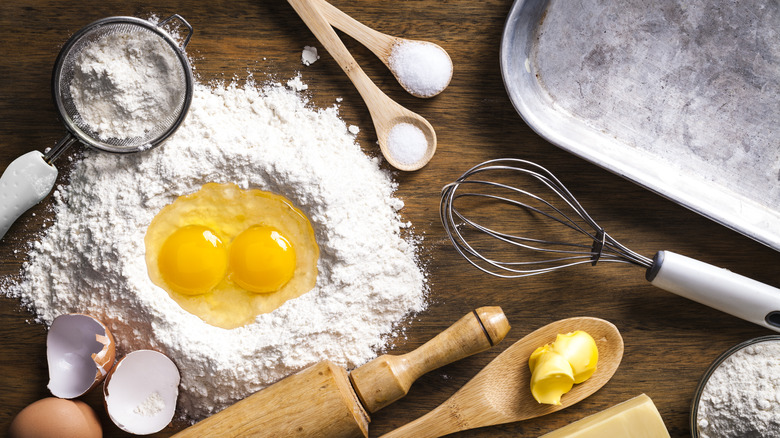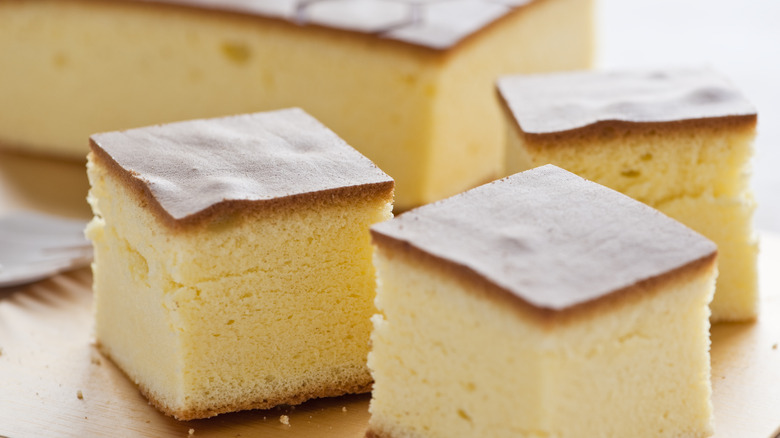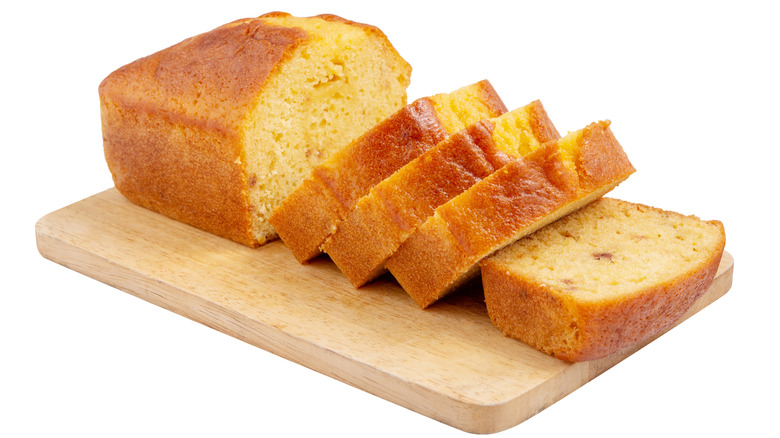Butter Vs Sponge Cake: What's The Difference?
At first glance, cake seems like one of the simplest forms of desserts to bake. It doesn't require the mixology of a great pie filling or the tower-stacking skills of a croquembouche. You can porbably make a basic vanilla cake with ingredients in your pantry right now. But the reality is that cakes are more complicated than that, and we don't just mean their frostings. Take the fine differene between sponge cake and butter cake, for instance.
Both are similar at a glance, but look deeper and you'll see these two confections couldn't be more different. Sponge cakes are light physically, getting their name from the slightly spongy texture that won't hold up to a heavy frosting. Butter cakes are heavier and more dense, with a hearty weight to each bite. You don't get the same fluffiness as you might with a sponge cake, but butter cakes can be exceptionally moist and do well with many kinds of frostings and glazes.
The differences in taste and texture between these cakes are born from the very beginning of a recipe, where you'll find that sponge and butter cakes require very different ingredients.
How to make a sponge cake
Sponge cakes are also sometimes known as foam cakes due to their springy texture. Fortunately, sponge cakes are tastier than that dish sponge next to your sink. The light texture is due to air that's mixed into the batter. In order to make a sponge cake, you really only need three ingredients — sugar, flour, and eggs — which makes for a relatively simple-to-fix cake. Some cooks take out the yolks and use just the egg whites, which will create a lighter but drier cake.
The trick here is to beat your eggs thoroughly, which introduces air and produces a foam. A stand mixer will give you a free hand to pour in the sugar as the eggs are being mixed. Since sponge cakes don't use baking powder or a leavening agent, the air from mixing works double duty to give the cake its lift and texture.
From there, you will want to mix in the flour slowly, careful not to go too fast and knock out the air bubbles. Then, it's straight into a cake pan and the oven. Sponge cakes work especially well with light toppings like whipped frosting and fresh berries.
How to make a butter cake
When it comes to making a butter cake, it's important to realize that there are actually many confections that fall under this umbrella term. Butter cakes range from pound cakes to red velvet to classic yellow cake with chocolate frosting. While each variant of butter cake has its own recipe, all share two common factors — they include butter or oil and also a leavening agent like baking powder.
To make a classic butter cake, let your butter come to room temperature before baking. Then, mix in the sugar until you have an aerated mixture. Next, add two eggs to the mixture, which will help the sugar permeate the cake batter. In a separate bowl, mix flour, baking powder, and salt. Add the contents of these two bowls together to form your cake batter.
If cooked properly, your butter cake should be moist and slightly heavy. Be careful not to under- or over-cook it, as it will either be raw in the center or become dry and crumbly. Now, that you know the difference between these two cakes, get to baking!


